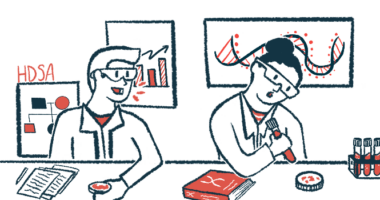Physical Activity Improves Symptoms of Early Huntington’s Disease, Study Shows

Physical activity improves cognitive and day-to-day functioning, and possibly motor function, in patients in the early stages of Huntington’s disease, a study shows.
The research, “Is There an Association of Physical Activity with Brain Volume, Behavior, and Day-to-day Functioning? A Cross Sectional Design in Prodromal and Early Huntington Disease,” was published in the journal PLoS Currents.
Physical activity may influence when a person gets Huntington’s disease. It has been shown to protect against loss of brain volume in adults aging normally and in those at risk of developing neurodegenerative disorders.
Researchers have also found that activity and physical therapy can improve Huntington’s patients’ gait, balance, mood, quality of life, and cognitive and day-to-day functioning.
The impact of physical activity on patients in early stages of the disease has not been studied until now. Research has indicated that much of the damage the disease causes is already done by the time of diagnosis, however. That means information about physical activity’s impact in the early stages of Huntington’s may help doctors find ways to combat it before motor symptoms appear.
Researchers analyzed a subset of the 1,300 patients in the Neurobiological Predictors of Huntington’s Disease (PREDICT-HD) study. The Huntington’s patients had experienced the gene expansion associated with the disease. The controls had not. The analysis covered 12 years of the patients’ lives.
DNA expansion in the gene encoding the huntingtin protein is the cause of Huntington’s disease.
The subset included 48 gene-expanded patients who had shown early symptoms of Huntington’s or had received an early diagnosis of the disease. The other study participants were 27 non-gene-expanded controls.
All participants wore Fitbit Ultra devices to monitor physical activity for three days and completed a self-reported International Physical Activity Questionnaire (IPAQ).
Researchers used magnetic resonance imaging (MRI) to analyze the white-matter volumes of two brain regions that Huntington’s affects — the hippocampus and the striatum.
The team used the Stroop Color and Word Test and the Symbol Digit Modalities Test (SDMT) to do a cognitive assessment of the participants. They evaluated motor function with the Unified Huntington’s Disease Rating Scale total motor score (TMS), and day-to-day functioning with the World Health Organization Disability Assessment Schedule (WHODAS) version 2.0.
Huntington’s patients who were physically active had significantly higher cognitive and day-to-day functioning scores than those who were not active. The control group showed no such correlation.
The results suggest that activity may help preserve physical functioning and independence in early-stage Huntington’s patients, researchers said.
Researchers also found a connection between activity and motor function in the test group as a whole, but the association was not significant in Huntington’s patients.
“Physical activity is an easy-to-implement, low-cost intervention that may help delay cognitive decline in gene-expanded persons, and also may have health benefits for at-risk [Huntington’s disease] family members who have not yet been tested or who do not want to be tested,” the authors wrote. “Physical activity is a health behavior that can be started at a very young age. Children who are at risk can participate in family physical activities. Those habits started at a young age can continue throughout the child’s life, offering benefits for overall health, and could have a potential protective effect with respect to early cognitive decline associated with [Huntington’s disease].”






